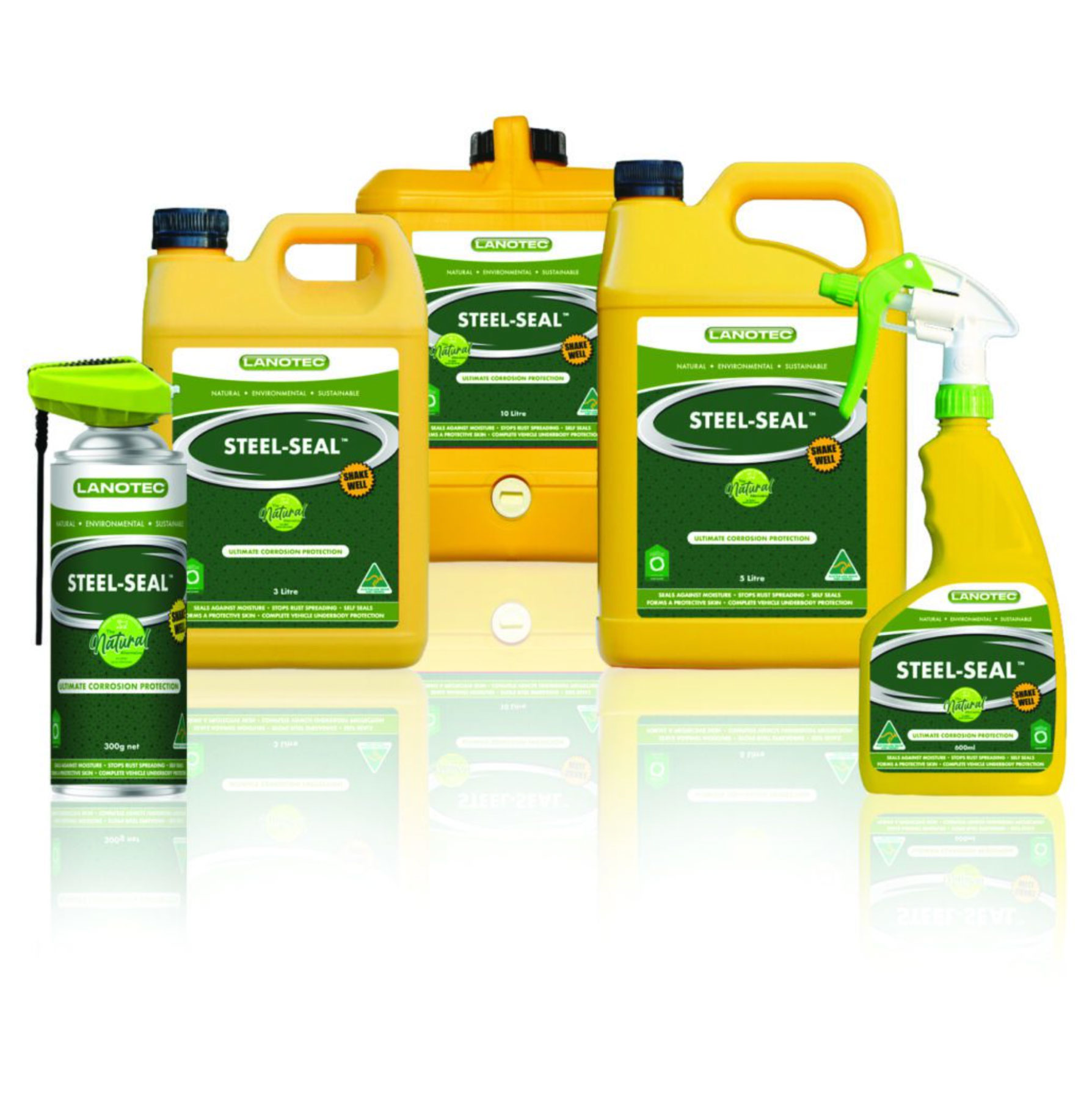
Steel Seal is far more than a typical sealant — it’s a high-performance corrosion inhibitor meticulously engineered to rejuvenate metal surfaces across a range of applications. From securing the light vehicle underbody of agricultural vehicles to enhancing the resilience of leisure equipment such as jet skis, trailers, caravans, and boats, Steel Seal brings its magic to a diverse array of everyday situations. Furthermore, its unique formula proves invaluable in various commercial contexts, including inside the following industries: chemical storage facilities; gas transport systems; ensuring drill pipe protection in shipping operations; and reinforcing the durability of chassis rails and industrial lifts.
To unlock the full potential of Steel Seal, it is crucial to understand the factors that shape its performance. These factors encompass proper surface preparation, suitable application techniques, and awareness of its activation timeline. It is also important to acknowledge that Steel Seal’s effectiveness extends beyond its innovative formula, as it is influenced by environmental conditions, existing damage, and diligent monitoring.
Whether you operate in construction, mining, oil and gas, or simply rely on Steel Seal for personal use, you’ll discover that its true power lies in its exceptional capacity to establish a resilient barrier against corrosion. Join us as we delve into the realm of Steel Seal, equipping you with the knowledge to unleash its full potential.
Understanding Steel Seal
How Steel Seal Works
Steel Seal’s superior performance lies in its unique functionality. Here’s how Steel Seal works its magic:
- Chemical reaction
Steel Seal isn’t your ordinary sealant. It’s a special concoction of reactive chemicals designed specifically for application on metal surfaces. When it encounters atmospheric moisture and metal oxides, a dynamic chemical reaction begins. - Formation of a hermetic seal
As this reaction occurs, Steel Seal forms a hermetic seal on the surface. This protective barrier keeps away moisture, oxygen, and any corrosive agents, significantly reducing the chances of corrosion.

Maximising Steel Seal’s Performance:
The performance of Steel Seal is influenced by various elements:
Temperature, surface condition, and application method
Steel Seal’s efficacy can vary based on different external conditions such as temperature, the state of the surface being treated, and the application process. Here’s how these factors come into play:
- Temperature
While higher temperatures speed up the chemical reaction, resulting in quicker curing and stronger bonding, extreme temperatures can compromise Steel Seal’s performance. - Surface condition
The state of the surface prior to application is critical. For best results, ensure surfaces are clean, dry, and free of rust, oil, or other contaminants. A well-prepared surface allows better adhesion, improving the sealant’s overall performance. - Application method
The way you apply Steel Seal is very important. Adhering to the manufacturer’s guidelines and using the right tools guarantees a uniform and consistent application, thereby maximising the sealant’s effectiveness.
The Importance of Surface Preparation and Application Techniques
- Surface preparation
Preparing the surface well is key for Steel Seal to deliver optimal results. Clean the surface thoroughly, get rid of any rust, and ensure it’s dry and debris-free. Proper preparation encourages better bonding between the sealant and the metal surface. - Application techniques
When it comes to applying Steel Seal, stick to recommended techniques. Whether it’s using a brush, roller, or spray, each method depends on the surface and specific manufacturer instructions. An even application and adhering to the recommended curing time are crucial for the sealant to form a lasting protective layer.
With an understanding of how Steel Seal operates and the factors that impact its performance, you’re well-equipped to leverage the full potential of this innovative sealant. Ensuring thorough surface preparation and correct application techniques paves the way for maximised effectiveness and long-term corrosion protection.
Timeframe for Steel Seal’s Activation
Knowing how long it takes for Steel Seal to activate and complete its sealing process is key to appreciating its effectiveness.
Upon application, Steel Seal starts its journey by coming into contact with moisture and metal oxides, initiating a dynamic chemical reaction. This process typically begins within minutes of application as the sealant’s reactive chemicals engage with surface elements.
The hermetic seal, the cornerstone of Steel Seal’s protective properties, develops gradually. Over several hours, the seal matures, forming a robust barrier against moisture and corrosion. It’s important to let Steel Seal have ample bonding time with the surfaces to ensure the formation of a durable, long-lasting protective layer.
The sealing process of Steel Seal is a gradual phenomenon, often taking up to 24 hours or more, depending on environmental conditions and the specific application. This process continues to enhance its protective properties over time. Key aspects to consider include:
- Duration for full seal development: Several hours.
- Importance of sufficient bonding time: Allow Steel Seal time to firmly adhere.
- Timeframe for complete sealing: Up to 24 hours or more.
As the seal strengthens, it enhances its resistance to moisture, oxygen, and corrosive substances, providing heightened protection. It’s important to keep in mind that the complete benefits of Steel Seal may take some time to become evident. By understanding this timeline, users can select an optimal and appropriate moment to apply the sealant, allowing ample time for it to establish a robust protective layer. Patience plays a vital role in maximising the effectiveness of Steel Seal, ensuring unparalleled corrosion protection is achieved.
Factors Shaping Steel Seal’s Timeline
Degree of Damage
The timeframe for Steel Seal’s effectiveness can be influenced by the degree of existing damage or corrosion on the surfaces you wish to apply it to. Some crucial considerations include:
- Severity of corrosion
The extent of corrosion or damage directly impacts Steel Seal’s working duration. Severe corrosion might need extra time for the sealant to penetrate and address the affected areas. - Significant repairs
For heavily damaged areas requiring extensive restoration work, the timeline for optimal results extends. Repairs must be completed before Steel Seal application, and additional time is often needed for proper surface preparation.
Environmental Conditions
Environmental conditions at the time of application also significantly affect Steel Seal’s effectiveness:
- Temperature
Temperature greatly influences Steel Seal’s activation and sealing process. Higher temperatures speed up the chemical reaction and curing time, whereas colder temperatures can decelerate the process. Extreme temperatures can extend the timeline for optimal results. - Humidity and atmospheric conditions
The humidity levels and general atmospheric conditions can also affect Steel Seal’s activation and sealing process. High humidity could slow down the drying and curing process, while dry conditions may hasten it. Adverse conditions like heavy rainfall or excess moisture can impact the bonding and overall performance of Steel Seal.

Setting Realistic Expectations and Ongoing Monitoring
Understanding and managing expectations is key when using Steel Seal. The benefits of this sealant, including its corrosion protection, aren’t always immediate but develop over time. Users must be patient, allowing sufficient time for Steel Seal’s activation and sealing process to take full effect.
Monitoring the sealant’s progress and evaluating its success are crucial parts of the maintenance process. Regular visual inspections of treated surfaces for signs of corrosion or additional damage can provide insights into Steel Seal’s effectiveness. Utilising moisture meters or humidity sensors can also help measure the sealant’s impact on moisture levels, a key factor in corrosion prevention.
Periodic assessments of Steel Seal’s performance help in understanding if it is providing the desired level of protection. In cases where signs of corrosion reappear or the protection seems to have diminished over time, reapplication of Steel Seal might be necessary. With the right expectations and consistent monitoring, Steel Seal can offer durable and long-lasting corrosion resistance, protecting your surfaces for the long term.
Defeat corrosion with Lanotec Steel Seal today
In the end, it’s clear that Steel Seal is your ticket to peace of mind when it comes to protecting your metal surfaces. Its distinct formula goes beyond being just a sealant — it becomes a shield against corrosive elements, promising longevity and durability. The process to get the most out of it, though it needs a bit of understanding and patience, is absolutely worthwhile. The lasting results speak for themselves.
Ready to witness this corrosion-fighting superhero in action? Grab your very own Steel Seal from one of Lanotec’s trusted resellers today and let it preserve and prolong the lifespan of your precious metal equipment.